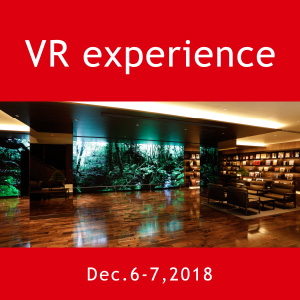-
 Full Conference Pass (FC)
Full Conference Pass (FC)
-
 Full Conference One-Day Pass (1D)
Full Conference One-Day Pass (1D)
-
 Basic Conference Pass (BC)
Basic Conference Pass (BC)
-
 Student One-Day Pass (SP)
Student One-Day Pass (SP)
-
 Experience Pass (EP)
Experience Pass (EP)
-
 Visitor Pass (VP)
Visitor Pass (VP)
-
 Exhibitor Pass (EP)
Exhibitor Pass (EP)
Date/Time:
Wednesday, December 5th - Thursday, December 6th, 10:00am - 6:00pm
Friday, December 7th, 10:00am - 4:00pm
Venue: Lobby Gallery (B1F, Glass Building)
3D Touch Point Detection on Load Sensitive Surface based on Continuous Fluctuation of A User Hand
Abstract: Expanding the concept of tangible interaction from designed interfaces to everyday objects around the life, we are working on 3D touch detection project, which has deployable load sensitive surface to capture the tangible interaction. On top of the key insight that human hand is continuously moving and never stops completely, our mathematical approach with pseudo inverse matrix method enabled the system to understand three dimensional touch interaction between user and objects above the 2D surface with embedded loadcels.
Authors/Presenter(s): Takatoshi Yoshida, MIT Media Lab, United States of America
Xiaoyan Shen, MIT Art Culture & Technology, United States of America
Tal Achituv, MIT Media Lab, United States of America
Hiroshi Ishii, MIT Media Lab, United States of America
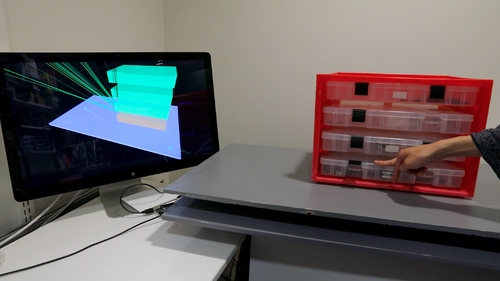
A Device for Reconstructing Light Field Data as 3D Aerial Image by Retro-reflection (Topic: Virtual Reality)
Abstract: The reconstructed the image by the light field display is projected in the air by fresnel lens and aerial imaging by retro-reflection and we can get to feel more reality.
Authors/Presenter(s): Kengo Fujii, Utsunomiya University, Japan
Kazuki Shimose, Utsunomiya University, Japan
Clément Trovato, Utsunomiya University, Japan
Masao Nakajima, Nikon Corporation, Japan
Toru Iwane, Nikon Corporation, Japan
Masaki Yasugi, Utsunomiya University, JST ACCEL, Japan
Hirotsugu Yamamoto, Utsunomiya University, JST ACCEL, Japan
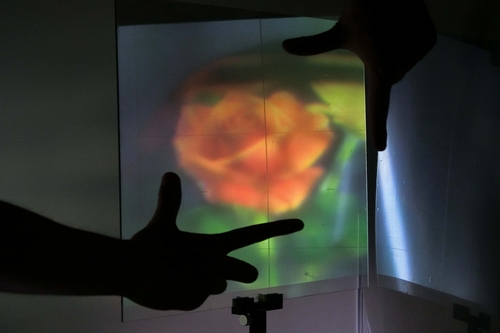
A Generic Visualization Framework for Understanding Missing Links in Bipartite Networks (Topic: Information Visualization and Scientific Visualization)
Abstract: We propose a novel visual analysis framework, MissBi, which allows for examining and understanding missing links in bipartite networks.
Authors/Presenter(s): Jian Zhao, FX Palo Alto Laboratory (FXPAL), United States of America
Francine Chen, FX Palo Alto Laboratory (FXPAL), United States of America
Patrick Chiu, FX Palo Alto Laboratory (FXPAL), United States of America
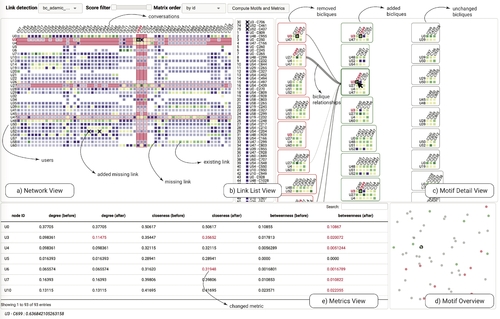
A Variational U-Net for Motion Retargeting (Topic: Animation and Visual Effects)
Abstract: We present a novel motion retargeting system using the deep autoencoder. We conduct several experiments and ours achieves more accuracy and less computational burden when compared with other approaches.
Authors/Presenter(s): Hanyoung Jang, NCSOFT, South Korea
Byungjun Kwon, NCSOFT, South Korea
Moonwon Yu, NCSOFT, South Korea
Seong Uk Kim, Kangwon National University, South Korea
Jongmin Kim, Kangwon National University, South Korea
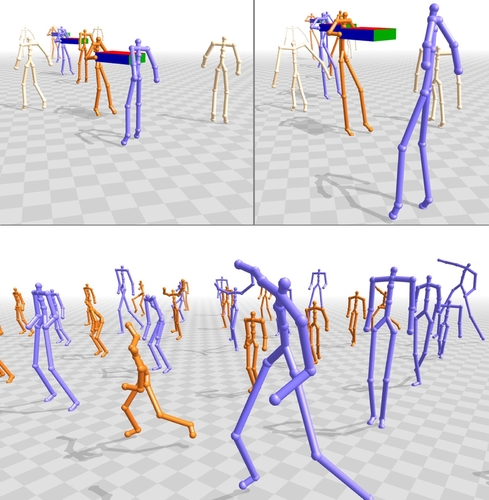
Adaptation of Manga Face Representation for Accurate Clustering
Abstract: To accurately cluster faces within an individual manga, we propose a method to adapt manga face representations to an individual manga.
Authors/Presenter(s): Koki Tsubota, The University of Tokyo, Japan
Toru Ogawa, The University of Tokyo, Japan
Toshihiko Yamasaki, The University of Tokyo, Japan
Kiyoharu Aizawa, The University of Tokyo, Japan
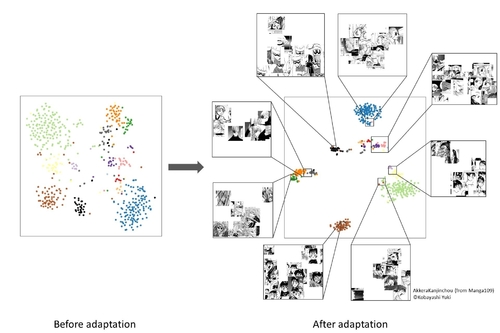
Afterglow Projection: Virtual Information Projection Method to Real Environment Using Pico Projector in Mixed Reality (Topic: Human-Computer Interaction)
Abstract: In this research, we extend the projection based MR using pico projector. The user can freely project the virtual information and leave it in the real environment.
Authors/Presenter(s): Shumpei Akahoshi, Kansai University, Japan
Mitsunori Matsushita, Kansai University, Japan
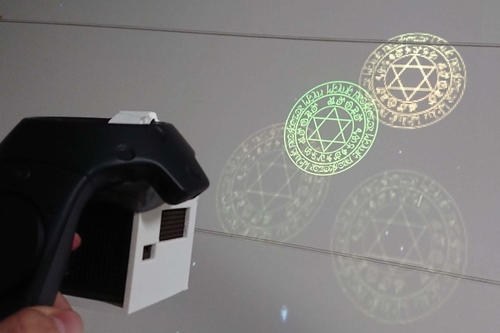
Alphabet Collage Art Generation (Topic: Image and Video Processing Applications)
Abstract: We propose a novel method to generate alphabet collage art from a single input image by replacing the partial curves of the image with the best-matched shape of alphabet letters.
Authors/Presenter(s): Ming-Te Chi, National Chengchi University, Taiwan
Hao-Hsuan Tang, National Chengchi University, Taiwan
Chih-Kuo Yeh, National Cheng Kung University, Taiwan
Charles Morace, National Cheng Kung University, Taiwan
Hui-Nieg Chou, National Cheng Kung University, Taiwan
Shih-Syun Lin, National Taiwan Ocean University, Taiwan
Tong-Yee Lee, National Cheng Kung University, Taiwan

An Innovative Model for Animation Education in Asia: the Massive Collaborative Animation Projects (Topic: Computer Graphic Education)
Abstract: The poster discusses the challenges, opportunities, and lessons gained from working with students from different cultures, inspiring novel ways in which animation education in Asia can be conducted.
Authors/Presenter(s): Rebecca Huang, Yale-NUS College, China
Kevin Kao, National Taiwan University of Arts, Taiwan
Kosuke Kudama, Kanazawa Institute of Technology, Japan
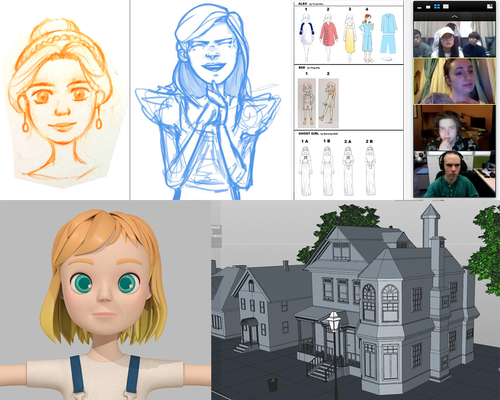
An Interface for Post-Match Play-by-Play Analysis of a Fighting Game Based on the Two Players' Eye Movements (Topic: Video Gaming)
Abstract: We propose an interface to support post-match play-by-play analysis of a hand-to-hand fighting game based on the two players' eye movements. An e-Sports match, like a professional chess match, is followed by analysis and commentary about the performance of the players. In this study, we constructed an interface for visualizing information about the match based on the players' eye movements to facilitate post-match play-by-play analysis and commentary. Our interface highlights commonalities and differences in the areas on the screen where the players focus their attention, as well as commonalities and differences in the direction of their eye movements.
Authors/Presenter(s): Ryohei Oda, Okayama University of Science, Japan
Yuto Mizumatsu, Okayama University of Science, Japan
Tomoki Kajinami, Okayama University of Science, Japan
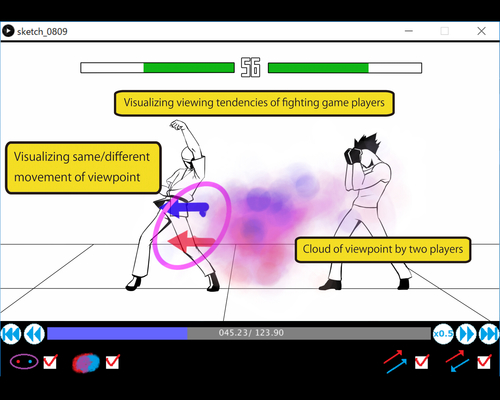
Automatic dataset generation for object pose estimation (Topic: Computer Vision and Image Understanding)
Abstract: Using structure from motion and domain randomization, we propose a method to quickly generate large datasets for training a ConvNet object pose detector.
Authors/Presenter(s): Kalenga-Bimpambu Tshilombo, AIST-CNRS Joint Robotics Laboratory, Centre National de la Recherche Scientifique, France
Yusuke Yoshiyasu, AIST-CNRS Joint Robotics Laboratory, Japan
Antonio Gabas, AIST-CNRS Joint Robotics Laboratory, Japan
Kota Suzui, AIST-CNRS Joint Robotics Laboratory, Japan
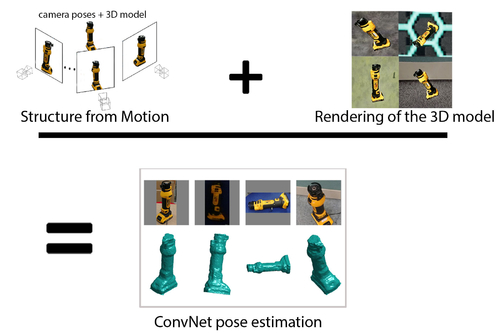
Automatic Generation of Hair Motion of 3D Characters Following Japanese Anime Style (Topic: Animation and Visual Effects)
Abstract: A method for automatic generation of anime-like hair motion of 3D characters is presented. The hair motion is produced according to the traditional Japanese animation style.
Authors/Presenter(s): Kenji Furukawa, Ritsumeikan University, Japan
Susumu Nakata, Ritsumeikan University, Japan
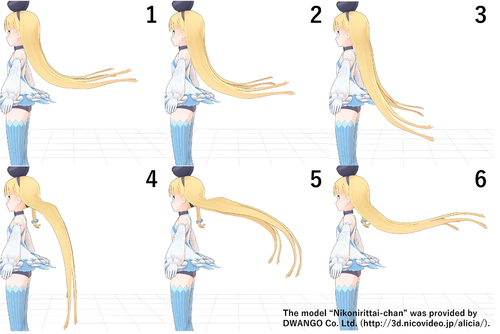
Automatic Generation of Interactive Projection Mapping for Leaves (Topic: Animation and Visual Effects)
Abstract: We propose a semi-automatic system to calculate the image registrations of projections for leaves and to interactively track the projection area. We describe our results with some animated effects.
Authors/Presenter(s): Tomoki Sueyoshi, Kyushu University, Japan
Yuki Morimoto, Kyushu University, Japan
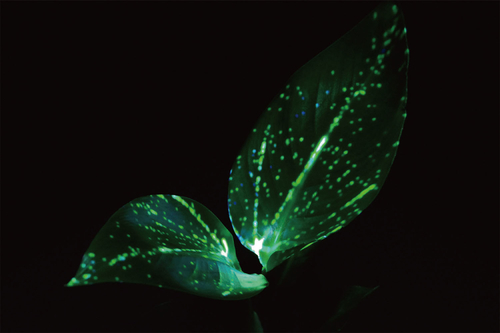
Automatic Perforation System for Korean Traditional Painting - Dancheong (Topic: Image and Video Processing Applications)
Abstract: Dancheong is designed to decorate various parts of wooden buildings with beautiful and majestic colors. The painting process involves a stage called Cheoncho which is a process whiich a craftsman punches holes one by one on the paper with a needle and repeats this action over millions of times. In order to reduce those kinds of time consuming job, we propose a system that automatically performs Cheoncho process to assist a craftsman in copying the desired pattern to the target building part with easy and accurate manner.
Authors/Presenter(s): Yoon-Seok Choi, Electronics and Telecommunications Research Institute (ETRI), South Korea
Soonchul Jung, Electronics and Telecommunications Research Institute (ETRI), South Korea
In-Su Jang, Electronics and Telecommunications Research Institute (ETRI), South Korea
TaeWon Choi, Electronics and Telecommunications Research Institute (ETRI), South Korea
Jin-Seo Kim, Electronics and Telecommunications Research Institute (ETRI), South Korea
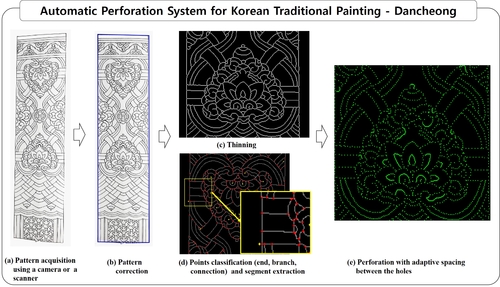
Blur Algorithms for Cartoon Animation (Topic: Animation and Visual Effects)
Abstract: This talk introduces specific blurring algorithms tailored for cartoon animation: a "Soft" style blur, and new directional/radial anisotropic blur used for cartoon moody and motion lines.
Authors/Presenter(s): Marc Salvati, OLM Digital, Inc., Japan
Kota Ito, OLM Digital, Inc., Japan
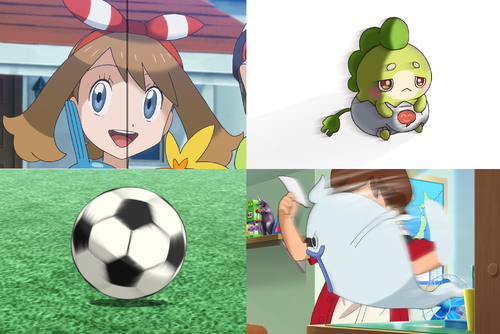
Chinese Sea Punica Granatum Floral Pattern Synthesis (Topic: Geometry and Modeling)
Abstract: The proposed system allows the users to interactively and automatically draw the traditional Chinese Sea Punica Granatum architectural decorative floral patterns.
Authors/Presenter(s): Shih-Hao Liu, National Taipei University of Technology, Taiwan
Tung-Ju Hsieh, National Taipei University of Technology, Taiwan
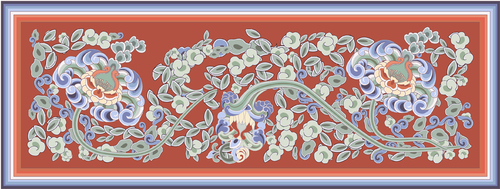
Color Enhancement Factors to Control Spectral Power Distribution of Illumination (Topic: Computer Vision and Image Understanding)
Abstract: We introduced color enhancement factors to control spectral power distribution of illumination, which enabled us to enhance one or more colors at once while retaining the color appearance of white.
Authors/Presenter(s): Masaru Tsuchida, NTT Corporation, Japan
Takahito Kawanishi, NTT Corporation, Japan
Kunio Kashino, NTT Corporation, Japan
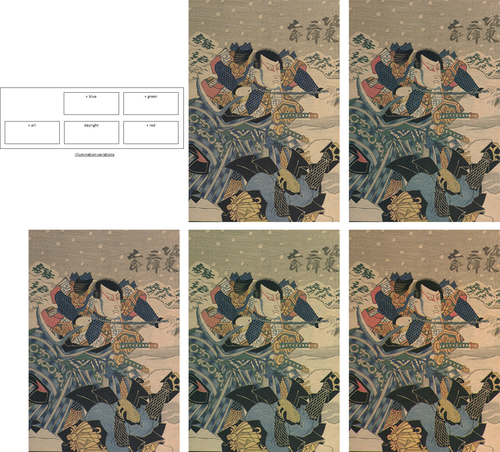
Combining Deep Learning Algorithm with Scene Recognition and Haptic Experience for 4D VR-Cinema (Topic: Computer Vision and Image Understanding)
Abstract: User not only receive the visual and auditory feedbacks from their first-person perspective, but also feel the haptic experiences according to different movie scenes.
Authors/Presenter(s): Sheng-Fu Ko, Tamkang University, Taiwan
Yi-Hung Lin, Tamkang University, Taiwan
Ping-Hsuan Han, National Taipei University of Technology, Taiwan
Chia-Chun Chang, Tamkang University, Taiwan
Chien-Hsing Chou, Tamkang University, Taiwan
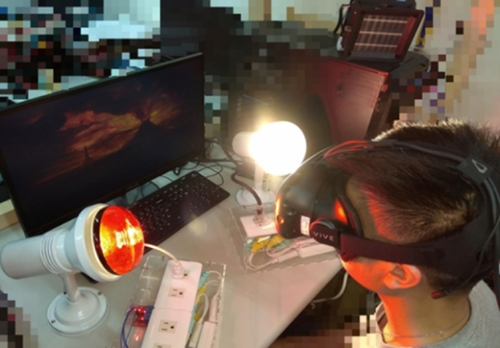
Danswing papers (Topic: Animation and Visual Effects)
Abstract: Our technique can give motion impressions to static objects by means of visual illusion!
Authors/Presenter(s): Takahiro Kawabe, NTT Communication Science Laboratories, Japan
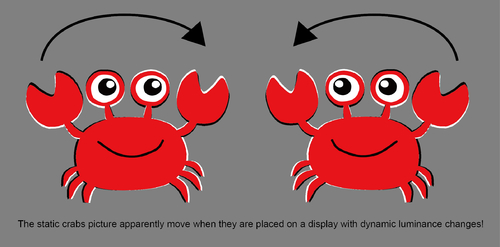
Deep Learning-based Super-Resolution for Digital Comics (Topic: Computer Vision and Image Understanding)
Abstract: We investigate deep learning-based super-resolution of digital comic images. Techniques effective for comic images and a new efficient model are presented.
Authors/Presenter(s): Jun-Hyuk Kim, Yonsei University, South Korea
Jun-Ho Choi, Yonsei University, South Korea
Choong-Hyun Seo, NAVER WEBTOON Corp., South Korea
Jaehyuk Chang, NAVER WEBTOON Corp., South Korea
Jong-Seok Lee, Yonsei University, South Korea
Diet Gamification toward Chewing Amount Control via Head Mounted Display (Topic: Human-Computer Interaction)
Abstract: We propose the diet gamification MR system to enhance chewing to promote human's health. The results of the subjective experiment suggest that this system increase the quality of chewing.
Authors/Presenter(s): Yuto Sugita, University of Tsukuba, Japan
Keiichi Zempo, University of Tsukuba, Japan
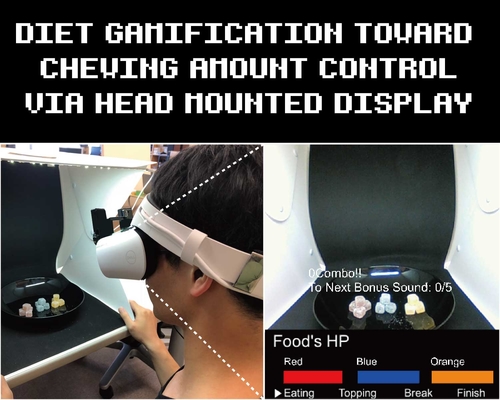
Digital Reproduction of Hair Waving Based on Animator Technique (Topic: Multimedia Applications)
Abstract: we propose the method reproduced tequniques used by animators to discribe the waving behavior of the hair, and generating an animation without strangeness as the cell-look animation.
Authors/Presenter(s): Naoaki Kataoka, Tokyo University of Science, Japan
Tomokazu Ishikawa, Toyo University, Dwango CG Research, Japan
Yusuke Kameda, Tokyo University of Science, Japan
Ichiro Matsuda, Tokyo University of Science, Japan
Susumu Itoh, Tokyo University of Science, Japan
Directional Heat Map Generation with Saccade Information (Topic: Information Visualization and Scientific Visualization)
Abstract: Heat map is important for eye tracking analysis and visualization. Proposed method uses mixed data structure of fixation points and saccades, that reflects actual gaze transition direction and gaze region.
Authors/Presenter(s): Yaodong LI, Guangdong University of Technology, China
Zhuo YANG, Guangdong University of Technology, China
Yinwei ZHAN, Guangdong University of Technology, China
Yongqiang LI, Guangdong University of Technology, China
Gang HE, Xidian University, China
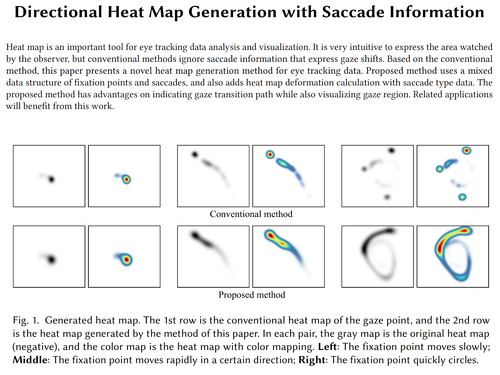
dongSpace: A Wide-area Mixed Reality Multiplayer Game System (Topic: Virtual Reality)
Abstract: A Wide-area Mixed Reality Multiplayer Game System Virtual-real Registration game environment
Authors/Presenter(s): Yihua Bao, AICFVE Beijing Film Academy, China
Dong Li, School of Optics and Photonics,Beijing Institute of Technology, China
Dongdong Weng, School of Optics and Photonics,Beijing Institute of Technology, China
Mo Su, School of Optics and Photonics,Beijing Institute of Technology, China
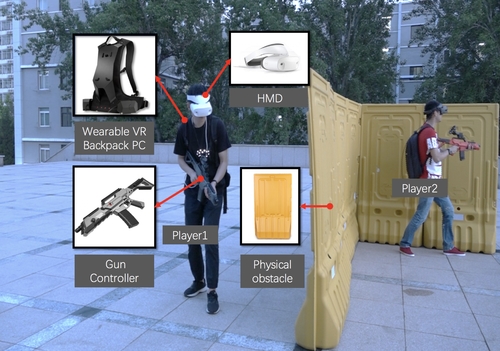
DT-Zheng: Digital Twin Method for Zheng Musical Instrument (Topic: Human-Computer Interaction)
Abstract: This paper made a digital twin musical instrument system of Zheng. We build the whole interactive experience (the interactive playing on the DMI, sound generation, and the immersive virtual environment).
Authors/Presenter(s): Ning Xie, School of Computer Science and Engineering,University of Electronic Science and Technology of China; Center for Future Media, University of Electronic Science and Technology of China, China
Xinrui Cai, University of Electronic Science and Technology of China, China
Sipei Li, University of Electronic Science and Technology of China, China
Yifan Lu, Nanchang Hangkong University, China
Kai Tan, University of Electronic Science and Technology of China, China
Mingyue Lou, University of Electronic Science and Technology of China, China
Heng Tao Shen, School of Computer Science and Engineering,University of Electronic Science and Technology of China; Center for Future Media, University of Electronic Science and Technology of China, China
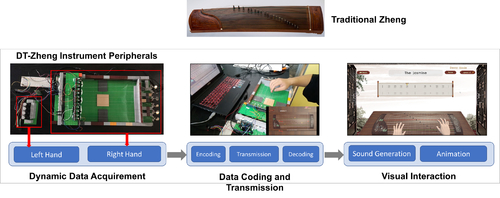
Enhancement Techniques for Human Anatomy Visualization (Topic: Information Visualization and Scientific Visualization)
Abstract: We introduce two simple techniques to enhance visualization of human anatomy, one is post processing for rendering, and another is a simple trick for geometry processing.
Authors/Presenter(s): Hirofumi Seo, The University of Tokyo, Japan
Takeo Igarashi, The University of Tokyo, Japan
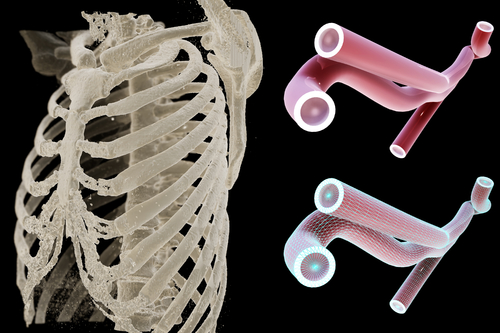
Evaluation of Reducing Three-dimensionality of Movement to Create 3DCG Animation looks more like 2D Animation (Topic: Animation and Visual Effects)
Abstract: We evaluated the 3DCG movement to make 3DCG a 2D animation style. We conducted a subjective evaluation of 3DCG movement when frame rate and projection method were changed. As a result, we could make the movement of 3DCG more similar to that of 2D animation.
Authors/Presenter(s): Kei Kitahata, Hokkaido University, Japan
Yuji Sakamoto, Hokkaido University, Japan
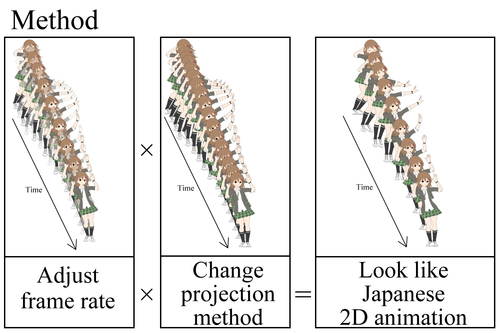
FingertipCubes: An Inexpensive D.I.Y Wearable for 6-DoF per Fingertip Pose Estimation using a Single RGB Camera (Topic: Computer Vision and Image Understanding)
Abstract: We present a 1 USD Do-It-Yourself wearable which coupled with a webcam, can provide 6-DoF per fingertip tracking in real-time. Applications include in-air writing, input for games and 3D UIs.
Authors/Presenter(s): Ojaswi Gupta, TCS Research, New Delhi, India
Ramya Hebbalaguppe, TCS Research, New Delhi, India
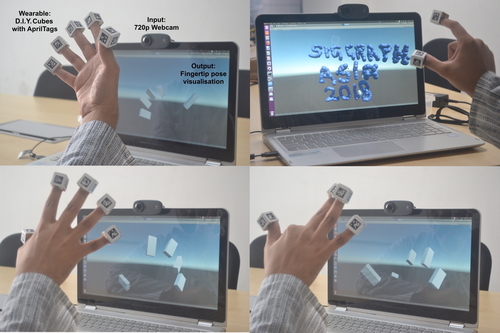
First-Person-View Drone Flying in Mixed Reality (Topic: Human-Computer Interaction)
Abstract: We present a drone with a stereoscopic camera based on human binocular vision, which offers a novel mixed-reality environment with a bidirectional interaction between the real and virtual worlds.
Authors/Presenter(s): Dong-Hyun Kim, Sejong University, South Korea
Yong-Guk Go, Sejong University, South Korea
Soo-Mi Choi, Sejong University, South Korea
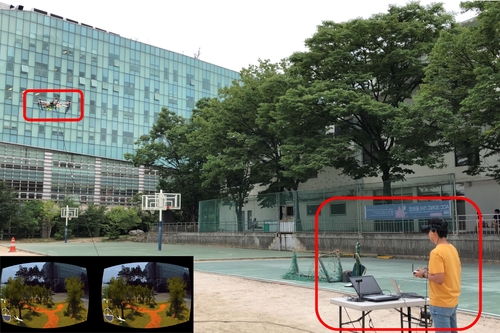
Free-viewpoint Synthesis over Panoramic Images (Topic: Virtual Reality)
Abstract: We propose a method which allows users to choose the desired viewpoint for a panoramic or perspective image from just one panoramic image.
Authors/Presenter(s): Tze-How Liew, National Taiwan University, Taiwan
Yueh-Chun Lai, National Taiwan University, Taiwan
Hong-Shiang Lin, National Taiwan University, Taiwan
Sun Yu Gordon Chi, Phillips Exeter Academy, United States of America
Ming Ouhyoung, National Taiwan University, Taiwan
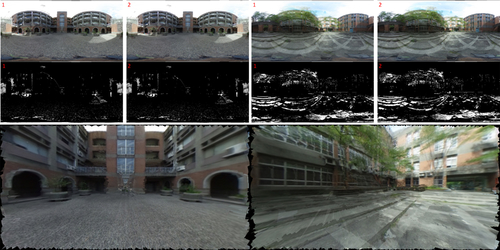
Fukushima Nuclear Plant as a Synthetic Learning Environment
Abstract: Education-specific, 3D virtual worlds as simulations – termed Synthetic Learning Environments - are ideal for 21st century learning. An SLE project of the Fukushima Dai’ichi nuclear power plant was designed, modeled, programmed and implemented for education purposes, motivated by the fact that the disaster of March 2011 revealed much about Japan’s lack of preparedness for nuclear accidents. An iterative process of design, make, share and reflect was adopted by the student developers. In Japan, the creative process is termed TKF: Tsukutte つくって; Katatte かたって; Furikaeru ふりかえる.
Authors/Presenter(s): Michael Vallance, Future University Hakodate, Japan
Yuto Kurashige, Future University Hakodate, Japan
Takurou Magaki, Future University Hakodate, Japan
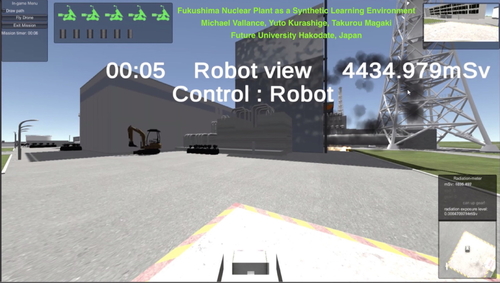
GAN with Autoencoder and Importance Sampling (Topic: Computer Vision and Image Understanding)
Abstract: GAN with Autoencoder and Importance Sampling
Authors/Presenter(s): Gahye Lee, Kyunghee University, South Korea
Seungkyu Lee, Kyunghee University, South Korea

Generating 360 Outdoor Panorama Dataset with Reliable Sun Position Estimation (Topic: Computer Vision and Image Understanding)
Abstract: We present an efficient and reliable approach to collect a reliable sun position dataset which can benefit the research projects of outdoor illumination.
Authors/Presenter(s): Shih-Hsiu Chang, National Tsing Hua University, Taiwan
Ching-Ya Chiu, National Tsing Hua University, Taiwan
Chia-Sheng Chang, National Tsing Hua University, Taiwan
Kuo-Wei Chen, National Taiwan University of Science and Technology, Taiwan
Chih-Yuan Yao, National Taiwan University of Science and Technology, Taiwan
Ruen-Rone Lee, Industrial Technology Research Institute, Taiwan
Hung-Kuo Chu, National Tsing Hua University, Taiwan
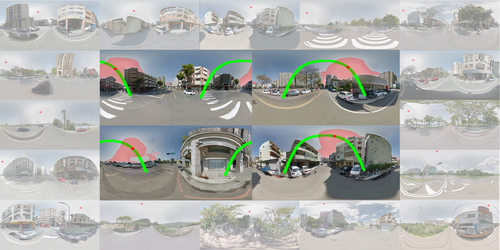
Generating Anime-like Face Images from Projected 3D Models (Topic: Animation and Visual Effects)
Abstract: This paper allows users to deform 3D facial model projection images with intuitive parameters for the axes of feature spaces that represent the style used for drawing faces for anime.
Authors/Presenter(s): Keisuke Yamakawa, Tokyo Institute of Technology, Japan
Suguru Saito, Tokyo Institute of Technology, Japan
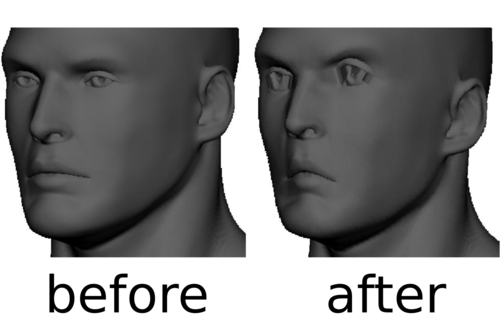
Generating Effect Animation with Conditional GANs (Topic: Animation and Visual Effects)
Abstract: We propose a deep learning based approach for generating a effect animation. We used a conditional GANs as a next-frame prediction model.
Authors/Presenter(s): Naofumi Akimoto, National Institute of Advanced Industrial Science and Technology (AIST), Keio University, Japan
Hirokatsu Kataoka, National Institute of Advanced Industrial Science and Technology (AIST), Japan
Yoshimitsu Aoki, Keio University, Japan
Gesture Recognition of Air-tapping and its Application to Character Input in VR Space (Topic: Human-Computer Interaction)
Abstract: We performed and evaluated finger motion recognition of air-tapping using CNN with sEMG input signals, through the character input experiment in VR space.
Authors/Presenter(s): Mamoru Hirota, Waseda University, Japan
Ayumu Tsuboi, Waseda University, Japan
Masayuki Yokoyama, Waseda University, Japan
Masao Yanagisawa, Waseda University, Japan
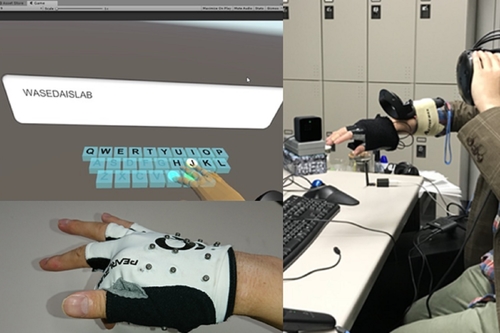
Global-optimization-based Model Decomposition for Support-free Multi-DOF 3D Printing (Topic: Geometry and Modeling)
Abstract: A global-optimization-based model decomposition method specifically proposed for support-free planar-layered multi-DOF 3D printing considering both geometry and mechanical limitations
Authors/Presenter(s): Lifang Wu, Beijing University of Technology, China
Yisong Gao, Beijing University of Technology, China
Miao Yu, Beijing University of Technology, China
Meng Jian, Beijing University of Technology, China
Zechao Liu, Beijing University of Technology, China
Yupeng Guan, Beijing University of Technology, China
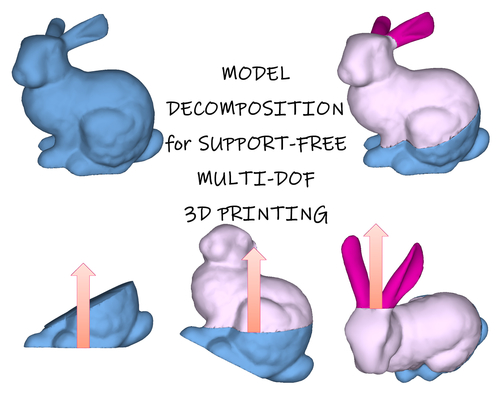
GoThro: Optical Transfer of Camera Viewpoint Using Retro-transmissive Optical System (Topic: Image and Video Processing Applications)
Abstract: GoThro is a capturing system that exceeds the physical limit due to the camera body, and that is composed of a camera and optical systems.
Authors/Presenter(s): Yudai Niwa, The University of Tokyo, Japan
Hajime Kajita, The University of Tokyo, Japan
Naoya Koizumi, The University of Electro-Communications, JST PRESTO, Japan
Takeshi Naemura, The University of Tokyo, Japan
Hair Modeling from a Single Anime-Style Image (Topic: Geometry and Modeling)
Abstract: We present a technique for reconstructing three-dimensional cartoon hair from a single anime-style portrait image.
Authors/Presenter(s): Charles C. Morace, National Cheng Kung University, Taiwan
Feng-Wei Wu, National Cheng Kung University, Taiwan
Chih-Kuo Yeh, National Cheng Kung University, Taiwan
Chia-Hsiang Chen, National Cheng Kung University, Taiwan
I-Cheng Yeh, Yuan Ze University, Taiwan
Tong-Yee Lee, National Cheng Kung University, Taiwan
High performance city rendering in Vulkan (Topic: Information Visualization and Scientific Visualization)
Abstract: Our work seek to minimise texture memory usage by streaming only view-relevant textures and to improve rendering performance using parallel constructs offered by Vulkan.
Authors/Presenter(s): Alex Zhang, Fraunhofer Singapore, Singapore
Kan Chen, Fraunhofer Singapore, Singapore
Henry Johan, Nanyang Technological University, Fraunhofer IDM@NTU, Singapore
Marius Erdt, Fraunhofer Singapore, Nanyang Technological University, Singapore
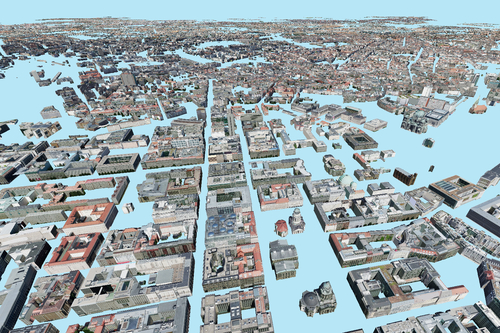
Historical Streetscape Simulation System that Reflects Changes in Weather, Time, and Seasons (Topic Computer-Aided Design)
Abstract: We developed a streetscape simulation system for the post-station town of Fujisawa-juku on the Old Tokaido for inheriting its historical culture. This system can reflect different weather, time, and seasons.
Authors/Presenter(s): Yasuo Kawai, Bunkyo University, Japan
Natsumi Kobayashi, Bunkyo University, Japan
Ayaka Enzaka, Bunkyo University, Japan
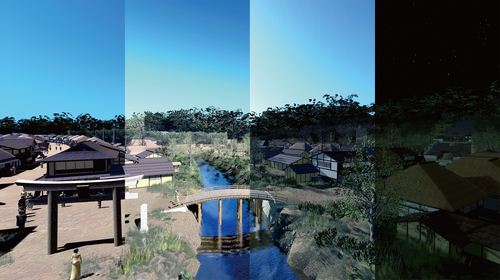
Human-Computer Interaction by Voluntary Vergence Control (Topic: Human-Computer Interaction)
Abstract: A novel human-computer interaction technique based on voluntary vergence of the eyes is proposed which allows a user to control the depth position of a physical object.
Authors/Presenter(s): Lingyan Ruan, City University of Hong Kong, Hong Kong
Bin Chen, City University of Hong Kong, Hong Kong
Miu-Ling Lam, City University of Hong Kong, Hong Kong
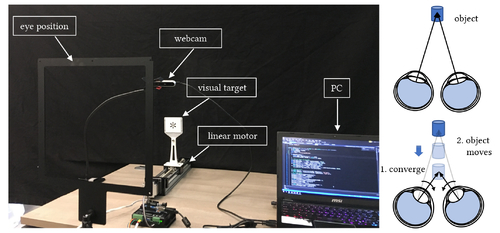
Human-Marionette Interaction Puppetry using Mechanical Arm and L-shaped Screen (Topic: Human-Computer Interaction)
Abstract: We use human-computer interaction technology to enhance the interactivity of the marionette show and use digital media technology to ensure the artistry.
Authors/Presenter(s): Mengwei Lin, Xiamen University, China
Junfeng Yao, Xiamen University, China
Yingying She, Xiamen University, China
Chao Gao, Xiamen University, China
Jin Chen, Xiamen University, China

Hunting Out Graphic Images from Real images using Recurrent Neural Network and Extended Principal Color Components (Topic: Computer Vision and Image Understanding)
Abstract: Hunting Out Graphic Images from Real images using Recurrent Neural Network and Extended Principal Color Components
Authors/Presenter(s): Gahye Lee, Kyunghee University, South Korea
Seungkyu Lee, Kyunghee University, South Korea

Interaction of a stereoscopic 3DCG image with motion parallax displayed in mid-air (Topic: Human-Computer Interaction)
Abstract: We propose a novel system that enables a user to see stereoscopic 3DCG images in mid-air and interact with them directly. This system displays 3DCG objects with motion parallax in mid-air. The user can observe the 3DCG objects in mid-air while feeling a stereoscopic effect by the motion parallax. It is also possible to interact with the mid-air 3DCG objects by fingers. The user can move, deform and draw 3DCG objects as if they were there.
Authors/Presenter(s): Mayumi Takasaki, Aichi Institute of Technology, Japan
Kyoko Ohashi, Aichi Institute of Technology, Japan
Shinji Mizuno, Aichi Institute of Technology, Japan
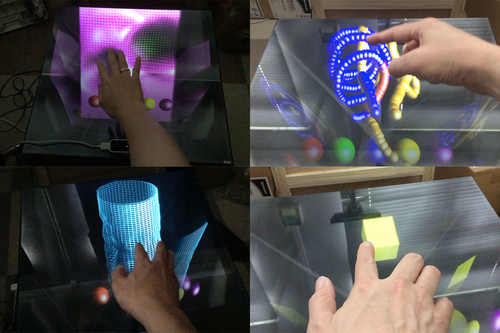
Interaction System with Mid-Air CG Character that Has Own Eyes (Topic: Virtual Reality)
Abstract: This study allows users to interact with a mid-air CG character by displaying mid-air images and capturing from that viewpoint with optical transfer of the camera viewpoint. This system enables an interaction in which the user and the mid-air CG character stare each other.
Authors/Presenter(s): Kei Tsuchiya, The University of Electro-Communications, Japan
Ayaka Sano, The University of Electro-Communications, Japan
Naoya Koizumi, The University of Electro-Communications, JST PRESTO, Japan
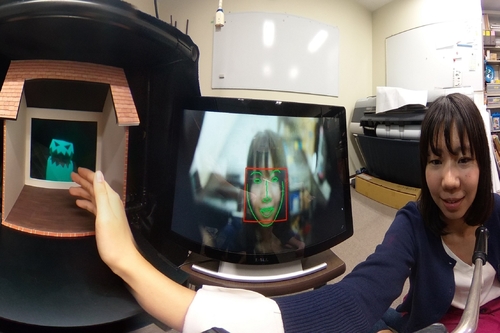
Interactive Modeling for Craft Band Design (Topic: Geometry and Modeling)
Abstract: We propose a support system that a novice can easily design a craft band work of the desired design.
Authors/Presenter(s): Yuki Igarashi, Meiji University, Japan
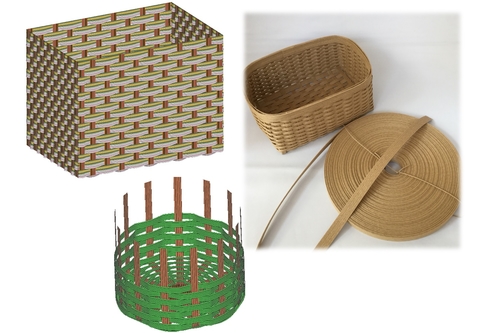
Interactive Visual Narrative “Cloudy Lady” (A Gaze Navigation Method and a Prototype Application) (Topic: Human-Computer Interaction)
Abstract: In this paper, a gaze navigation method for an interactive visual narrative application is proposed, and a prototype system, developed for touchscreen computer devices, such as the iPad, is described.
Authors/Presenter(s): Negar Kaghazchi, The University of Electro-Communications, Japan
Sachiko Kodama, The University of Electro-Communications, Japan
Masakatsu Kaneko, The University of Electro-Communications, Japan
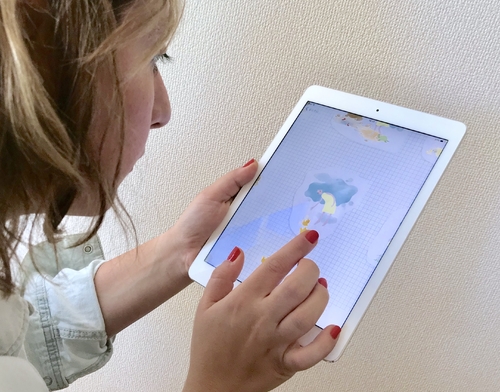
Life Sciences in Virtual Reality: First-Year Students Learning as Creators (Topic: Information Visualization and Scientific Visualization)
Abstract: We present learning activities where first-year biology students learn about complex biological structures by creating their own VR experiences, rather than using VR as a learning tool.
Authors/Presenter(s): Christopher Hammang, The University of Sydney, Australia
Phillip Gough, The University of Sydney, Australia
Weber Liu, The University of Sydney, Australia
Eric Jiang, The University of Sydney, Australia
Jim Cook, The University of Sydney, Australia
Pauline Ross, The University of Sydney, Australia
Philip Poronnik, The University of Sydney, Australia

Motion Regeneration using Motion Texture and Auto-encoder (Topic: Computer Vision and Image Understanding)
Abstract: Motion Regeneration using Motion Texture and Auto-encoder
Authors/Presenter(s): Suekyeong Nam, Kyunghee University, South Korea
Seungkyu Lee, Kyunghee University, South Korea
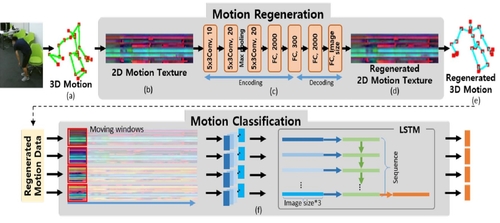
Non-photorealistic Rendering of Yangzhou School Painting for Koi Animation (Topic: Animation and Visual Effects)
Abstract: Our system generates koi animation in the style of Chinese painting fast and easily based on 3D models and other dynamic Chinese Painting elements according to the user inputs.
Authors/Presenter(s): Rina Savista Halim, National Taiwan University of Science and Technology, Taiwan
Phillip Pan, National Taiwan University of Science and Technology, Taiwan
Kuo Wei Chen, National Taiwan University of Science and Technology, Taiwan
Chih-Yuan Yao, National Taiwan University of Science and Technology, Taiwan
Tong-Yee Lee, National Cheng Kung University, Taiwan
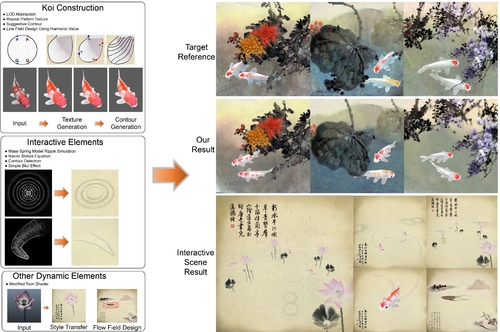
Novel structure using quasirigid folding of voxel in Ron Resch pattern (Topic: Geometry and Modeling)
Abstract: We propose a deformation structure that expands in xzy axes simultaneously using Ron Resch pattern. this structure is an Integrated Design, which enabled us to design according to the application.
Authors/Presenter(s): Shingo Uzawa, University of Tsukuba, Japan
Toshiharu Igarashi, University of Tsukuba, Japan
Kazuki Takazawa, University of Tsukuba; Pixie Dust Technologies, Inc., Japan
Nozomi Magome, University of Tsukuba, Japan
Yoichi Ochiai, University of Tsukuba; Pixie Dust Technologies, Inc., Japan
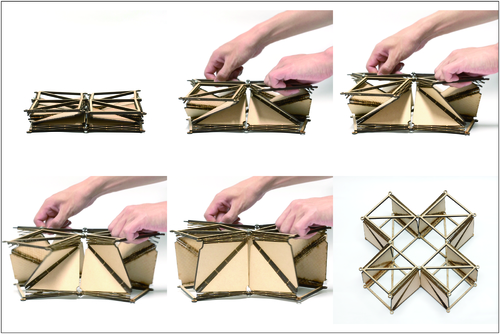
Object Tracking-based Foveated Super-Resolution Convolutional Neural Network for Head Mounted Display (Topic: Image and Video Processing Applications)
Abstract: We propose a novel foveated super-resolution convolutional neural network (SRCNN) for HMD using an object tracking algorithm to reduce computation load for rendering high resolution images. We implement the object tracking on the region to compensate for a frame processing speed of eye-tracking devices, relatively slow to apply the resolution conversion. SRCNN applies to cognitive regions, and typical interpolation applies to other regions to reduce the rendering cost. As a result, the computation is decreased by 90.4059%, and PSNR is higher than the conventional foveated rendering algorithm.
Authors/Presenter(s): Sanghyuk Kim, Sogang University, South Korea
Min-Woo Seo, Sogang University, South Korea
Seung Joon Lee, Sogang University, South Korea
Suk-Ju Kang, Sogang University, South Korea

OpenISS Depth Camera as a Near-Realtime Broadcast Service for Performing Arts and Beyond (Topic: Computer Vision and Image Understanding)
Abstract: OpenISS is an open source software suite, which exhibits a multimodal interaction architecture with individual components providing a platform for artists to augment art performances, entertainment and technology also as SaaS. It is positioned to be the backend core for ISSv2 and similar systems.
Authors/Presenter(s): Jashanjot Singh, Concordia University, Canada
Haotao Lai, Concordia University, Canada
Konstantinos Psimoulis, Concordia University, Canada
Paul Elie Valentin Palmieri, Concordia University, Canada
Inna Georgieva Taushanova-Atanasova, Concordia University, Canada
Yasmine Chiter, Concordia University, Canada
Amirali Shirkhodaiekashani, Concordia University, Canada
Serguei Mokhov, Concordia University; mDreams Pictures, Inc; CCIFF.ca, Canada
Optimize deep super-resolution and denoising for compressed textures (Topic: Image and Video Processing Applications)
Abstract: Our super-resolution and/or denoising method achieves more accurate restoration and faster execution speed than previous CNN-based methods: SRCNN, FSRCNN, ESPCN and AR-CNN on both of NVIDIA GeForce® GPU and mobile devices.
Authors/Presenter(s): Shintaro Takemura, Bandai Namco Studios Inc., Japan
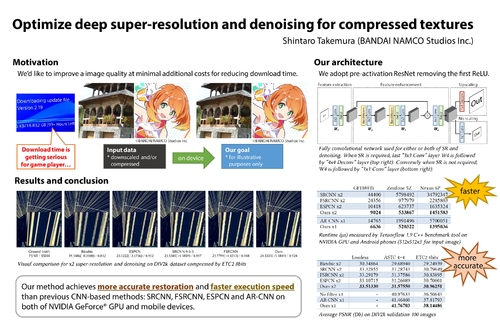
PanoAnnotator: A Semi-Automatic Tool for Indoor Panorama Layout Annotation
Abstract: We propose a semi-automatic system that annotates 2D panoramas to obtain high-quality 3D room layouts with both automatic estimations and user edits.
Authors/Presenter(s): Shang-Ta Yang, National Tsing Hua University, Taiwan
Hung-Kuo Chu, National Tsing Hua University, Taiwan
Chi-Han Peng, King Abdullah University of Science and Technology (KAUST), Saudi Arabia
Peter Wonka, King Abdullah University of Science and Technology (KAUST), Saudi Arabia
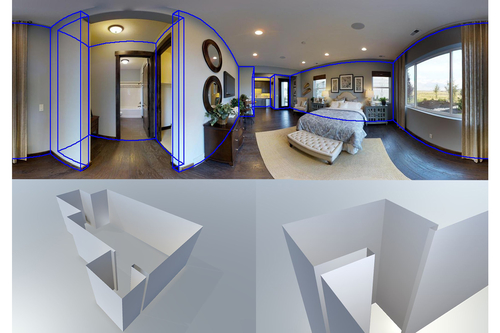
Panoramic Depth Reconstruction within a Single Shot by optimizing Global Sphere Radii (Topic: Virtual Reality)
Abstract: We propose a method that uses low cost camera facilities and defines the spherical radius as disparity for scene reconstruction.
Authors/Presenter(s): Po-Yao Huang, National Taiwan University, Taiwan
Hong-Shiang Lin, National Taiwan University, Taiwan
Sun Yu Gordon Chi, Phillips Exeter Academy, United States of America
Liang-Han Lin, National Taiwan University, Taiwan
Ming Ouhyoung, National Taiwan University, Taiwan
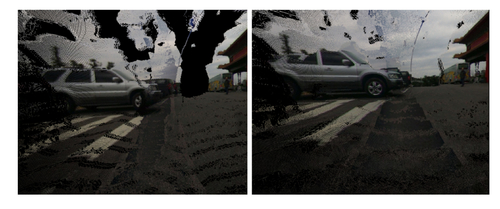
PPConv: Polypod Convolution for 3D Point Cloud Description (Topic: Geometry and Modeling)
Abstract: PPConv: Polypod Convolution for 3D Point Cloud Description
Authors/Presenter(s): Hyunsoo Song, Kyunghee University, South Korea
Seungkyu Lee, Kyunghee University, South Korea

Pre- and Post-Processes for Automatic Colorization using a Fully Convolutional Network
Abstract: Automatic colorization is a significant task especially for Anime industry. An original trace image to be colorized contains not only outlines but also boundary contour lines of shadows and highlight areas. Unfortunately, these lines tend to decrease the consistency among all images. Thus, this paper provides a method for a cleaning pre-process of anime dataset to improve the prediction quality of a fully convolutional network, and a refinement post-process to enhance the output of the network.
Authors/Presenter(s): Sophie Denise Paulette Ramassamy, Nara Institute of Science and Technology, Japan
Hiroyuki Kubo, Nara Institute of Science and Technology, Japan
Takuya Funatomi, Nara Institute of Science and Technology, Japan
Daichi Ishii, Nara Institute of Science and Technology, Japan
Akinobu Maejima, OLM Digital, Inc.; IMAGICA GROUP Inc., Japan
Satoshi Nakamura, Nara Institute of Science and Technology, Japan
Yasuhiro Mukaigawa, Nara Institute of Science and Technology, Japan
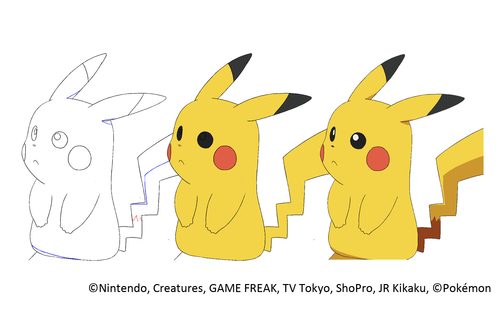
Rapid Prototyping System Using Transformable and Adherable PCL Blocks (Topic: Human-Computer Interaction)
Abstract: We proposed and implemented a block-assembly rapid prototyping system that can transform the size and shape of blocks and strengthen adhesion by using blocks made of PCL.
Authors/Presenter(s): Keiichiro Taniguchi, Waseda University, Japan
Tomoko Hashida, Waseda University, Japan
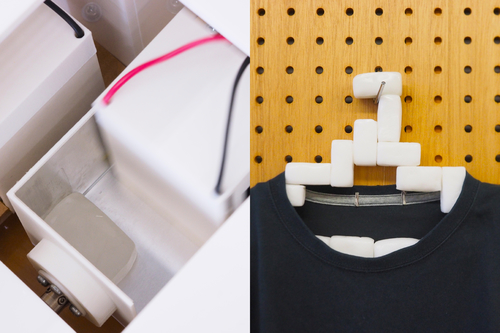
Real-time Measurement and Display System of 3D Sound Intensity Map using Optical See-Through Head Mounted Display (Topic: Information Visualization and Scientific Visualization)
Abstract: We propose a system of real-time measurement and visualization for a broad sound field by using optical see-through head mounted display (OSTHMD) with simultaneous localization and mapping (SLAM). The proposed system can superimpose the measurement results directly on the real space by OSTHMD and SLAM. The system also achieves free movement of measurement positions in a broad area without multiple AR markers. Visualizing the 3D sound intensity map, which is a stationary vector field representing the energy flow of sound, of an entire room by the proposed system helps us to design the sound field within a space.
Authors/Presenter(s): Yuta Kataoka, Waseda University, Japan
Wataru Teraoka, Waseda University, Japan
Yasuhiro Oikawa, Waseda University, Japan
Yusuke Ikeda, Tokyo Denki University, Japan

Real-Virtual Bridge: A Modular Mechanism to Mediate Between Real and Virtual Objects
Abstract: We propose a real-virtual bridge, a conceptual model that can be used to integrate real objects and virtual objects for constructing virtual reality application systems, introduce the concept and architecture of a real-virtual bridge, and describe two implementations of the bridge on smartphones and microscopes.
Authors/Presenter(s): Tomomi Takashina, Nikon Corporation, Japan
Yuji Kokumai, Nikon Corporation, Japan
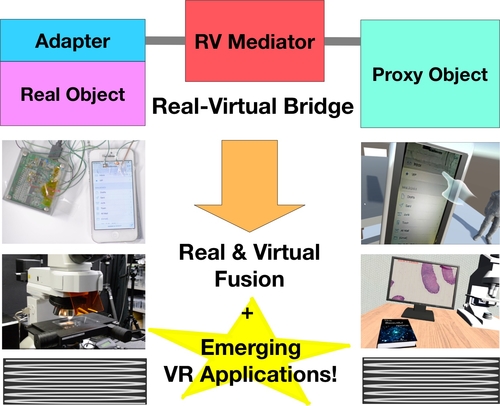
Realistic AR Makeup over Diverse Skin Tones on Mobile
Abstract: We propose a novel approach to the application of realistic makeup over a diverse set of skin tones in mobile phones using augmented reality.
Authors/Presenter(s): Bruno Evangelista, Instagram, United States of America
Houman Meshkin, Instagram, United States of America
Helen Kim, Instagram, United States of America
Anaelisa Aburto, Instagram, United States of America
Ben Max Rubinstein, Instagram, United States of America
Andrea Ho, Instagram, United States of America

Research and Development of Augmented FPV Drone Racing System (Topic: Animation and Visual Effects)
Abstract: Augmented FPV Drone Racing is a system that allows spectators to understand the situation of drone races easily by using augmented feedback techniques, including projection mapping and autonomous commentaries. In this project, we have been developing visualization solutions for FPV (first person view) drone racing to allow the spectators/pilots to understand easily (or intuitively) the race situation.
Authors/Presenter(s): Koh SUEDA, National University of Singapore, Singapore
Takashi KITADA, Tohjak Inc., Digital Hollywood University, Japan
Yushin SUZUKI, Digital Hollywood University, Japan
Taiki WADA, Digital Hollywood University, Japan
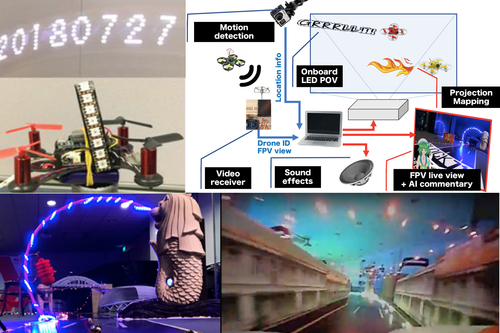
Retinal HDR: HDR Image Projection Method onto Retina
Abstract: There are multiple problems in the area of near-eye display: field of view, vergence-accommodation conflict, image quality, and dynamic range. A study has been conducted to solve such problems. However, compared with other near-eye display tasks, a few studies have targeted HDR near-eye display. We propose HDR representation method for near-eye display combining Dihedral Corner Reflector Array (DCRA)-based retinal projection and a high-contrast projector.
Authors/Presenter(s): Yuta Itoh, University of Tsukuba; Pixie Dust Technologies, Inc., Japan
Kenta Yamamoto, University of Tsukuba; Pixie Dust Technologies, Inc., Japan
Yoichi Ochiai, University of Tsukuba; Pixie Dust Technologies, Inc., Japan

Ring Graphs in Virtual Reality: Exploring a New and Novel Method for Node Placement and Link Visibility in VR-Based Graph Analysis (Topic: Information Visualization and Scientific Visualization)
Abstract: We developed a novel graph visualization technique designed specifically for virtual reality. Furthermore, we conducted a user study that compared our novel ring visualization to a traditional node-based graph visualization.
Authors/Presenter(s): Raghav Gupta, University of Maryland, College Park, United States of America
Alex Busch, University of Maryland, College Park, United States of America
Brian Russin, Expert Consultants, Inc., United States of America
Samir Khuller, University of Maryland, College Park, United States of America
Celeste Lyn Paul, U.S. Department of Defense, United States of America
Mikhail Sorokin, University of Maryland, College Park; MPLEXVR, United States of America
Galen Stetsyuk, University of Maryland, College Park, United States of America
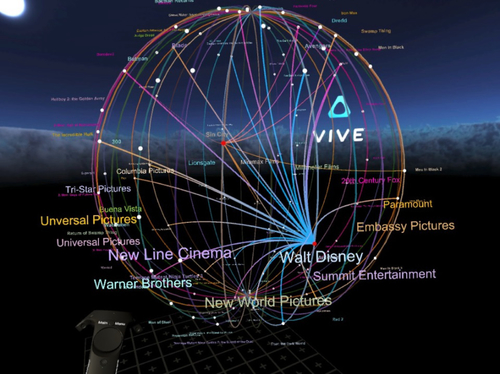
Scientific and Visual Effects Software Integration for the Visualization of a Chromatophore
Abstract: A custom software integration and rendering pipeline combines scientific and visual effects tools to cinematically visualize a supercomputer simulation of a photosynthetic organelle called a chromatophore.
Authors/Presenter(s): Kalina M. Borkiewicz, National Center for Supercomputing Applications, University of Illinois at Urbana-Champaign, United States of America
AJ Christensen, National Center for Supercomputing Applications, University of Illinois at Urbana-Champaign, United States of America
Stuart A. Levy, National Center for Supercomputing Applications, University of Illinois at Urbana-Champaign, United States of America
Robert M. Patterson, National Center for Supercomputing Applications, University of Illinois at Urbana-Champaign, United States of America
Donna J. Cox, National Center for Supercomputing Applications, University of Illinois at Urbana-Champaign, United States of America
Jeff D. Carpenter, National Center for Supercomputing Applications, University of Illinois at Urbana-Champaign, United States of America
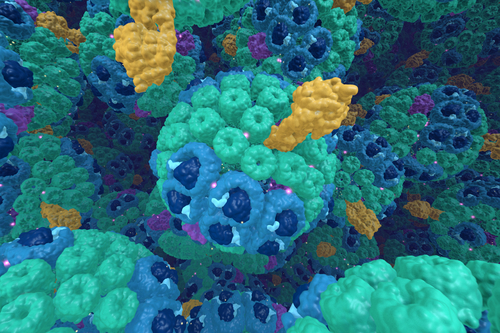
Shape and Texture Reconstruction for Insects by using X-ray CT and Focus Stack Imaging (Topic: Geometry and Modeling)
Abstract: Reconstructing textured three dimensional (3D) models of insect specimens is important, since digital format has various advantages such as high space efficiency, high accessibility, degradation free and so on. This poster presents a technique for reconstructing a 3D shape and texture of an insect by using X-ray CT measurement and focus stack imaging. We construct a 3D shape by segmenting CT volume and obtain a texture from focus stack images taken from multiple viewpoints. By combining the both, we achieved to reconstruct highly detailed shapes and textures of insect specimens.
Authors/Presenter(s): Wataru Ono, Shibaura Institute of Technology, Japan
Hikaru Shionozaki, Shibaura Institute of Technology, Japan
Takashi Ijiri, Shibaura Institute of Technology, Japan
Kenji Kohiyama, Keio University, Japan
Hiroya Tanaka, Keio University, Japan
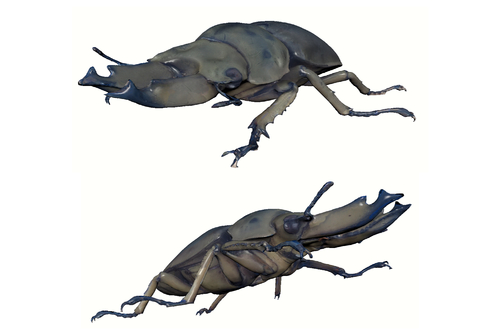
Simulating Kimono Fabrication based on the Production Process of Yuki-tsumugi (Topic: Image and Video Processing Applications)
Abstract: Yuki-tsumugi is a traditional Japanese silk fabric. In the production of this silk fabric, a splashed pattern based on a picture is first created on a sheet of exclusive grid paper. Second, piece goods is woven based on the pattern plan. Finally, a kimono is produced from the piece goods. However, estimating the appearance of changes to the kimono during each step of the production is difficult. Therefore, we propose a method for generating a kimono image of Yuki-tsumugi from a picture based on the actual production process.
Authors/Presenter(s): Natsuki Kagaya, Utsunomiya University, Japan
Hiroshi Mori, Utsunomiya University, Japan
Tomoharu Ishikawa, Utsunomiya University, Japan
Kazuya Sasaki, Utsunomiya University, Japan
Miyoshi Ayama, Utsunomiya University, Japan
Fubito Toyama, Utsunomiya University, Japan
Kenji Shoji, Utsunomiya University, Japan
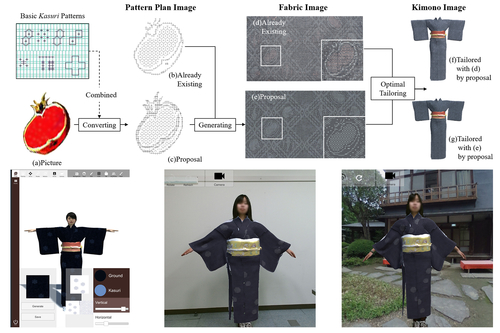
Simulation of Bubbles with Floating and Rupturing Effect for SPH (Topic: Animation and Visual Effects)
Abstract: Our method based on incompressible SPH and multi-fluid simulation framework realizes the various behaviors of bubbles, especially the floating and rupturing effect can be simulated physically.
Authors/Presenter(s): Hiroki Watanabe, University of Tsukuba, Japan
Makoto Fujisawa, University of Tsukuba, Japan
Masahiko Mikawa, University of Tsukuba, Japan

Simulation of Different Materials Texture in Virtual Reality through Haptic Gloves Using Vibrating Cells (Topic: Human-Computer Interaction)
Abstract: This article explores the possibilities of a light and inexpensive way of doing haptic feedback through texture simulation using tactile vibration. With the popularization of virtual reality, the field of haptic feedback is in turmoil. The goal in this study is to expose a moderately realistic but cheap way of simulating haptic feedback including the texture of a surface, to propose a system accessible by the great majority.
Authors/Presenter(s): Hugo Pourrier-Nunez, Ecole Supérieure de Génie Informatique (ESGI), France
Alain Lioret, Université Paris 8, Ecole Supérieure de Génie Informatique (ESGI), France
Anthony Bazelle, Ecole Supérieure de Génie Informatique (ESGI), France
Maxime Rignault, Ecole Supérieure de Génie Informatique (ESGI), France
Michael Chang, Ecole Supérieure de Génie Informatique (ESGI), France
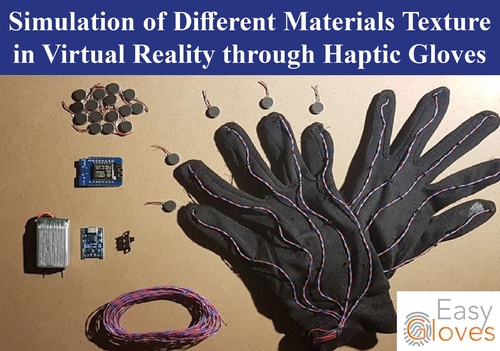
Social Facilitation with Virtual Jogging Companion on Smartglasses (Topic: Human-Computer Interaction)
Abstract: This abstract reports how solo casual runner felt the jogging companion shown on a pair of smartglasses s/he was wearing in our pilot study.
Authors/Presenter(s): Takeo Hamada, The University of Tokyo, Japan
Michiteru Kitazaki, Toyohashi University of Technology, Japan
Noboru Koshizuka, The University of Tokyo, Japan

Spatially augmented depth and transparency in paper materials (Topic: Animation and Visual Effects)
Abstract: This study reports a novel perceptual light projection technique which can give illusory depth impressions to a real two-dimensional object.
Authors/Presenter(s): Takahiro Kawabe, NTT Communication Science Laboratories, Japan
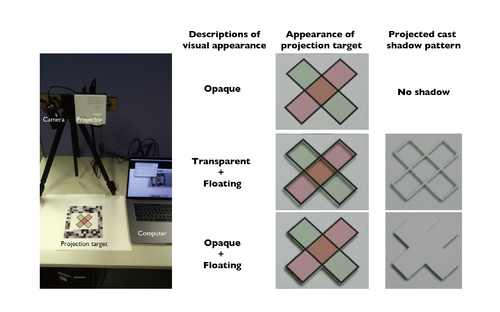
Spectral Rendering of Fluorescence using Importance Sampling (Topic: Animation and Visual Effects)
Abstract: We propose a method for rendering fluorescence under global illumination environment efficiently by using importance sampling of wavelength considering both spectra of fluorescent materials and light sources.
Authors/Presenter(s): Wataru Yamamoto, Hiroshima University, Japan
Bisser Raychev, Hiroshima University, Japan
Toru Tamaki, Hiroshima University, Japan
Kazufumi Kaneda, Hiroshima University, Japan
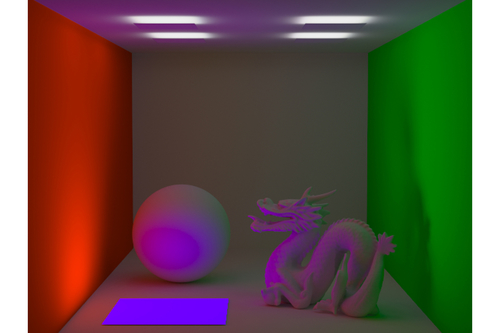
Study on background optical flow cancellation using cyclically updated camera posture information (Topic: Computer Vision and Image Understanding)
Abstract: We analyze relationship between the gaps of multiple process cycles and tolerance to motion acceleration of the camera. Then we verify the result on the actual moving object detection system.
Authors/Presenter(s): Yoshibumi Fukuda, Hitachi, Ltd., Japan
Kazuya Sugimoto, Hitachi, Ltd., Japan
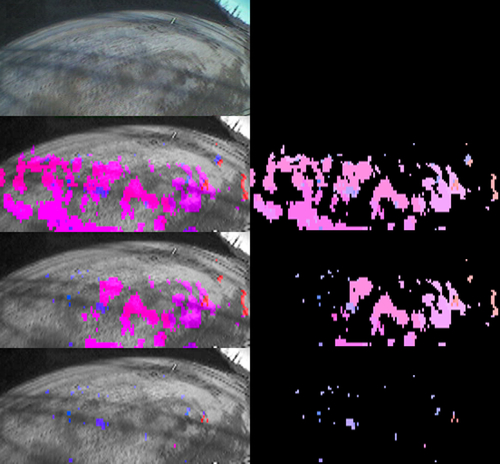
Tactile Microcosm of ALife: Interaction with Artificial Life by Aerial Mixed Reality Display
Abstract: Holographic-look small fish is floating within the water filled in a petri dish. A user can enjoy interacting with the simulated schooling fish-like artificial life through aerial imaging and haptic feeling. The virtual creatures moves autonomously by combination of a predator-prey model and BOIDs algorithm implemented by a potential method.
Authors/Presenter(s): Toshikazu Ohshima, Ritsumeikan University, College of Image Arts and Sciences, Japan
Tsukasa Sumizono, Ritsumeikan University, College of Image Arts and Sciences, Japan
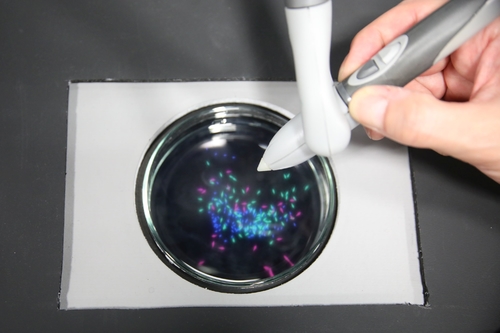
Tangible Interaction with 3D Printed Modular Robots through Multi-Channel Sensors (Topic: Human-Computer Interaction)
Abstract: We introduce tangible interaction through multi-channel sensors into 3D printed modular robots. A user study shows that young students can effectively improve their spatial-reasoning skill after interacting with these robots.
Authors/Presenter(s): Minjing Yu, Tsinghua University, China
Yongjin Liu, Tsinghua University, China
Guozhen Zhao, Institute of Psychology, Chinese Academy of Sciences, China
Charlie C.L. Wang, The Chinese University of Hong Kong, Hong Kong
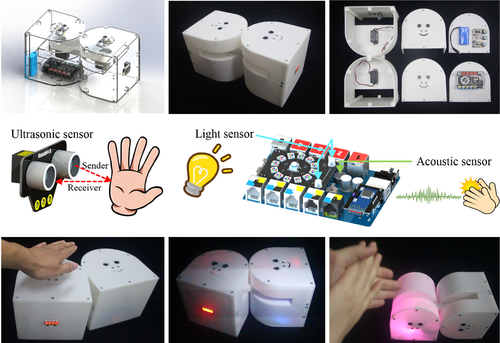
Tentacle Flora: Lifelike Robotic Sculpture (Topic: Human-Computer Interaction)
Abstract: The Tentacle Flora is a robotic sculpture inspired by a vision of a colony of the sea anemone growing on the coral. A shape-memory alloy actuator is used as tentacles and is composed of a BioMetal Fiber such that it can bend in three directions. The top of the actuator glows softly mimicking a bioluminescent organism using a full colored LED. The Tentacle Flora induces the beauty, wonder, and existence of living sea anemones in the depths of the ocean.
Authors/Presenter(s): Akira Nakayasu, Kanazawa College of Art, Japan
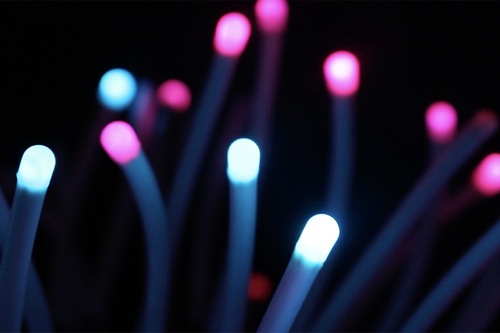
Transforming Medical Education and Training with VR using M.A.G.E.S (Topic: Virtual Reality)
Abstract: Our mission is to transform medical education and training of surgeons, through innovative VR simulation and skill transfer from the virtual to the real operating room in a fail-safe environment.
Authors/Presenter(s): George Papagiannakis, ORamaVR; University of Crete, ICS-FORTH, Greece
Nikos Lydatakis, ORamaVR, Greece
Steve Kateros, ORamaVR, Greece
Stelios Georgiou, ORamaVR, Greece
Paul Zikas, ORamaVR, Greece
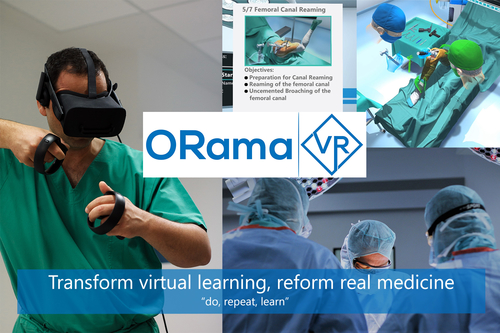
Transitory Project, an intercative artistic digital installation based on an artificial intelligence (Topic: Animation and Visual Effects)
Abstract: Transitory project is an artistic and digital installation, centered around artificial intelligence. It interacts directly with the audience, diffusing abstract audiovisual elements and expressing herself through poems.
Authors/Presenter(s): Maël Crespin--Pommier, IMAC at Université Paris-Est-Marne-la-Vallée, France
Antoine Demière, IMAC at Université Paris-Est-Marne-la-Vallée, France
Baptiste Olivier, IMAC at Université Paris-Est-Marne-la-Vallée, France
Antonin Leuret, IMAC at Université Paris-Est-Marne-la-Vallée, France
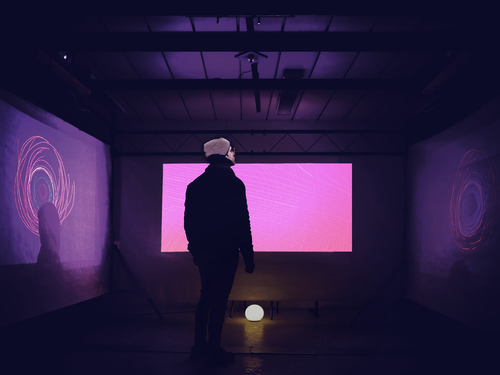
Translucent Surface Detection by Raycasting through Multiple Depth Images (Topic: Geometry and Modeling)
Abstract: Translucent Surface Detection by Raycasting through Multiple Depth Images
Authors/Presenter(s): Seungpyo Ha, Kyunghee University, South Korea
Seungkyu Lee, Kyunghee University, South Korea
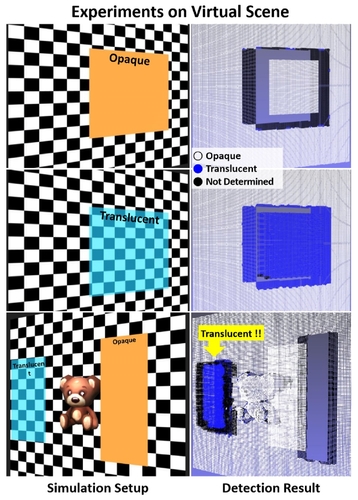
Vector Graphics Editing with Interweaving and Penetrating (Topic: Geometry and Modeling)
Abstract: In this paper, we develop a web-based vector graphics interweaving and penetrating editing system. We propose a data structure to dealing with interweaving and penetrating, allowing users to assign depth value for each edge of a polygon. As a result, when we click on a polygon and move it to interweave with another one, the intersecting edge is calculated using linear interpolation of the depth values. In contrast, the conventional SVG format arranges layers to separate two polygons for interweaving and penetrating.
Authors/Presenter(s): Yu-Lin Chao, National Taipei University of Technology, Taiwan
Tung-Ju Hsieh, National Taipei University of Technology, Taiwan

Visualization System for Tsunami Evacuation Behavior (Topic: Computer-Aided Design)
Abstract: We implement a system that simulates evacuee behavior during a tsunami using massive agents and develop free and easily accessible tools that can be used by local governments and residents.
Authors/Presenter(s): Yasuo Kawai, Bunkyo University, Japan
Yurie Kaizu, Bunkyo University, Japan
Shusei Yoshida, Bunkyo University, Japan
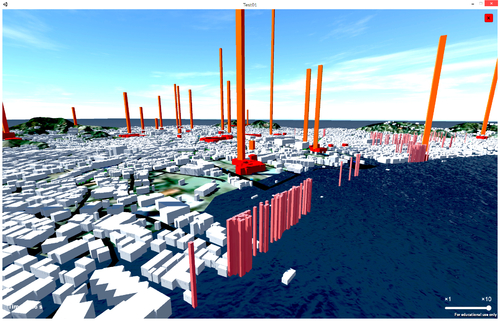
Vulkan Rendering Framework for Mobile Multimedia (Topic: Image and Video Processing Applications)
Abstract: We discuss a mobile video editing application that uses Vulkan - a low overhead, cross platform, graphics and compute API, and compares with an Open GL ES based multimedia application.
Authors/Presenter(s): Mahak Gambhir, Samsung R&D Institute, Bangalore, India
Swati Panda, Samsung R&D Institute, Bangalore, India
Shaik Jani Basha, Samsung R&D Institute, Bangalore, India



